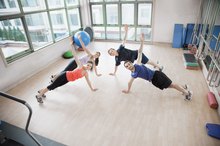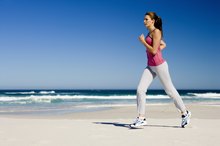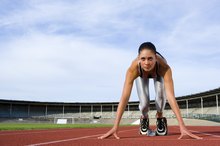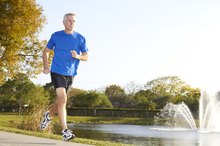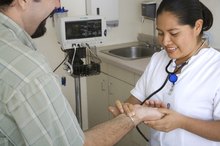How Does Exercise Increase Sympathetic Nervous System Activity?
Involuntary processes in your body such as heart rate and blood pressure are controlled by a segment of your nervous system called the autonomic nervous system. One part of the autonomic system, called the sympathetic nervous system, controls your basic “fight-or-flight” responses. Regular exercise decreases activity in your sympathetic system and increases activity in another part of the autonomic nervous system called the parasympathetic nervous system.
Sympathetic Nervous System
When you’re confronted with dangerous or stressful situations, involuntary processes in your body elevate activity in your sympathetic nervous system. In turn, this heightened activity leads to changes such as increases in your blood pressure and heart rate and decreases in food digestion. In modern society, constant triggering of the sympathetic system may play a significant role in the development of various forms of heart disease. If you lead a physically inactive lifestyle, you may increase your base level of sympathetic activity, which in turn may lead to increased heart-related risks.
- When you’re confronted with dangerous or stressful situations, involuntary processes in your body elevate activity in your sympathetic nervous system.
- In modern society, constant triggering of the sympathetic system may play a significant role in the development of various forms of heart disease.
Parasympathetic Nervous System
Long-Term Effects of Exercise on the Respiratory System
Learn More
Your parasympathetic nervous system works by offsetting the fight-or-flight responses of your sympathetic nervous system. This includes lowering your blood pressure and heart rate, increasing food digestion, lowering your breathing rate and increasing blood flow to your kidneys and intestines. In addition to helping you recover from body stresses generated by your sympathetic system, your parasympathetic system helps lower your body’s energy usage during everyday resting or normal conditions and helps you prepare for any future stresses caused by fight-or-flight reactions.
Exercise Effects
When you engage in regular aerobic exercise, you reduce the stress load on your body in a number of ways, including lowering your blood pressure and levels of harmful LDL cholesterol, increasing your levels of helpful HDL cholesterol and improving your blood flow and basic heart function. In combination, these physical changes lead to reduced activity in your sympathetic nervous system and increased activity in your parasympathetic system. Paradoxically, this increased parasympathetic activity actually lowers the stress levels placed on the normal function of your body.
Significance
Social & Emotional Benefits of Regular Exercise
Learn More
The exercise-related reduction in the activity of your sympathetic nervous system may significantly decrease your chances for developing heart disease, according to Patrick J. Mueller of the University of Missouri-Columbia. Increased activity in your parasympathetic nervous system may also contribute to decreased heart-health risks. Additionally, it appears that the more you exercise, the greater the effects on your sympathetic and parasympathetic systems. However, further study and testing are needed to verify the real-world results of laboratory testing.
- The exercise-related reduction in the activity of your sympathetic nervous system may significantly decrease your chances for developing heart disease, according to Patrick J. Mueller of the University of Missouri-Columbia.
Related Articles
References
- University of Washington: The Autonomic Nervous System
- Metropolitan State College of Denver: Autonomic Nervous System (Pages 8 and 9)
- University of New Mexico: Vigorous Versus Moderate-Intensity Exercise: Len Kravitz, Ph.D.; 2006
- Adams and Victor's Principles of Neurology, 9th ed: The McGraw-Hill Companies, Inc., 2009.
- Blumenfeld H, Neuroanatomy through Clinical Cases. Sunderland: Sinauer Associates Publishers 2002.
Writer Bio
M. Gideon Hoyle is a writer living outside of Houston. Previously, he produced brochures and a wide variety of other materials for a nonprofit educational foundation. He now specializes in topics related to health, exercise and nutrition, publishing for various websites.
